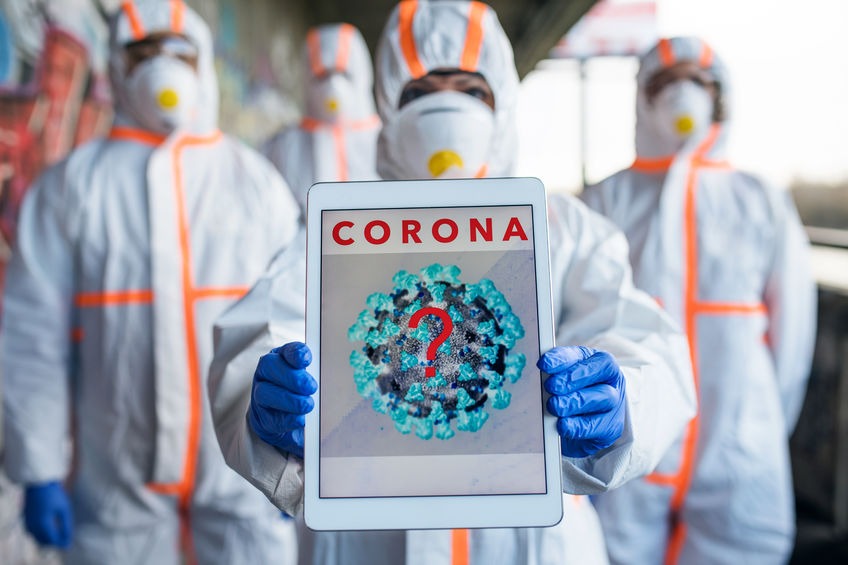Fast-food-style Coronavirus testing stations are popping up all over the country to limit the spread of the virus. Here’s a guide on how it works and where you can find them on the go.
If you wake up one morning with a fever, shortness of breath and a cough, you need to get tested for COVID-19, not only for your own safety, but for the safety of all South Africans with compromised immune systems. Stopping the spread of the virus is the only way we can put this slimy monster to bed.
Why get a Coronavirus test on the go?
According to Andrew Cuomo, Governor of New York, drive-through testing keeps people in their cars so that they don’t have to walk into a hospital or a doctor’s office and infect health professionals and other patients. “Drive-throughs are not only smarter and safer, but also faster and easier”, says Cuomo. Kim An-Hyun, Chief of the Goyang Community Health Center also confirms that more people can be tested in a shorter period of time at on the go testing stations.
How much does it cost for testing?
According to Netwerk 24 the cost of a test is around R 1000.
“Mediclinic is not profiting from the tests at all. Only laboratory costs are covered. But it is important for people to know that they can go for free testing at the NCID”, says Madalie Groenewald, Mediclinic spokesperson.
How testing stations work
The entire procedure takes about 15 minutes to complete according to CBS New York. Those who are tested are asked to self-isolate until they're aware of their results (if they're found to be positive, they'll be asked to take medical precautions and further self-isolate).
The Coronavirus drive-through test steps:
STEP 1: Notice the symptoms
Make sure that you show symptoms before you go for a test as there is a shortage on the amount of available test kits.
The symptoms to look out for according to the World Health Organization (WHO):
Common symptoms include:
- fever
- tiredness
- dry cough
Other symptoms include:
- shortness of breath
- aches and pains
- sore throat
- a small number of people have also experienced diarrhoea, nausea or a runny nose
If you suspect the above symptoms, contact your private GP telephonically. Your doctor will decide if you need a test and provide you with forms to take to the drive-through testing station.
Take note: Some drive-through stations require forms from your doctor, while others don't. Call your local drive-through station to confirm what is needed.
STEP 2: Take precautions
Wash your hands often for at least 20 seconds, wear a face mask to limit the spreading of germs and self-isolate just in case. If you don’t wear a mask, you won’t be allowed access for testing.
STEP 3: Drive to the testing station
Upon arrival you will be greeted by a person in protective equipment. So, if you see a weirdly dressed human wearing a face shield, goggles, gown and gloves, don’t be startled. It's personal protective gear medical personnel are required to wear for their own safety and in the interested of the public’s safety to prevent the spread of this highly contagious virus. While remaining seated in your car, the “man from Mars” will spray your hands with sanitizer and collect the referral form your doctor issued or give you a questionnaire to complete to see if you meet the requirements for testing.
STEP 3: Samples are taken
Stay glued to your car seat, while the masked man takes two samples from your mouth and nose for testing. The samples are sealed and sent off to a lab in Pretoria for testing.
STEP 4: Continue to self-isolate
After having been tested, go straight back home while you wait for your test results. It’s absolutely critical that you continue to self-isolate just in case until you’re sure of the results. This is the ideal time to stay in bed and boost your immune system with ample rest and a healthy diet – remember to follow your doctor’s orders religiously.
It takes about 1 to 6 days for results to be confirmed. You will be contacted telephonically with the results.
STEP 5: Results and treatment
If you test positive for COVID-19, contact your GP for treatment options. He/she will guide you with the necessary measures you need to take in order to ensure you have the best possible chance to make a full recovery.
Should your test results turn out to be negative, you’re not completely off the hook… You still have to stay at home for the duration of this outbreak and limit your exposure to the virus by practising social distancing principles.
Here are the locations of the COVID-19 drive-through testing stations in SA:





Equip yourself with the latest news, updates and precautionary measures to curb the spread of the COVID-19 virus. But be sure to consult reputable sources of information. You can even save the Government’s COVID-19 Support number (060 012 3456) on WhatsApp and message the contact by saying “Hi”. You will then receive a menu response, where you will find all the latest updates on cases, prevention methods, symptoms and more.
Take care!
Related blogs:
Need help to self-isolate? Here’s a guide.



